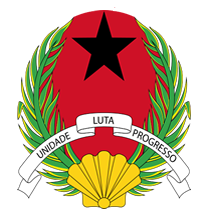Guinea-Bissau: Government
Key Figures
- Chief of State:
- President Umaro Sissoco Embalo
- Head of Government:
- Prime Minister Rui Duarte De Barros
Overview
- Government Name:
- Republic of Guinea-Bissau
- Constitution:
- Adopted: 1984; Establishes a semi-presidential representative democratic republic, separation of powers among executive and legislative branches with the judicial being independent.
- Government Type:
- Republic

Index of Economic Freedom
Grades each country on a scale of 0 to 100, based on ten freedoms, with 100 representing the greatest amount of economic autonomy from government intervention. Source: Heritage Foundation (2023)
Country Risk Rating
There is no Country Risk Rating for Guinea-Bissau
Government Branches
| Main Powers | Election Process | Election Cycle 1 | |
|---|---|---|---|
| Executive | The president and prime minister are responsible for executive tasks and constituting the executive branch of government. |
The president is elected by absolute majority vote through a two-round system. |
5 years |
| Judicial | Responsible for supreme court decisions and constituting of the judicial branch of government. |
Nominated by the higher council of the magistrate, then appointed by the president. |
Life appointment |
| Legislative | The people’s national assembly is responsible for constituting the legislative branch of government. |
102 members are elected through a closed-list proportional representation system. |
4 years |
Regional Trade Blocs
International Organization Participation [2]
Environmental Agreements [3]
Tax Information [2]
- Tax Authority:
- Information not available
- Tax Name:
- Information not available
Sources:
- ElectionGuide http://www.electionguide.org/
- EY, http://www.ey.com
- CIA World Factbook, https://www.cia.gov/the-world-factbook/
- U.S. Bilateral Relations Fact Sheets http://www.state.gov/r/pa/ei/bgn/


